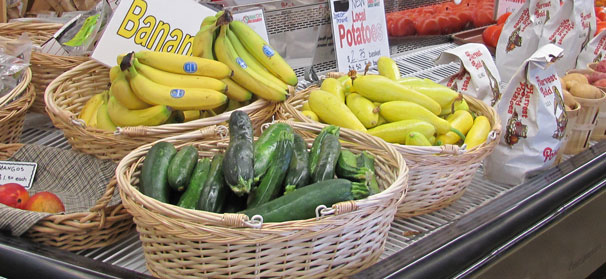

Sep 18, 2012Diversification spurs growth for New York farm
There’s life beyond wholesaling – a whole lot of it.
The family-owned and run Samascott Farm in Kinderhook, N.Y., started out mainly growing apples and wholesaling them to processors. Along the way, the family discovered farmers’ markets. As processing sales declined, farmers’ market sales increased and spurred the Samascotts to diversify what they grow.
That’s in addition to a u-pick operation that includes all of the farm’s crops. They also have an on-farm market and recently opened a new store that also houses a bakery and a space where they make their own ice cream, a few miles away along the highway in town. Besides fresh produce and their own frozen grass-fed beef, they also sell annuals and bedding plants out of greenhouses there. The property came with greenhouses, and the Samascotts added a large one attached to the building.
A family affair
Samascott Farm is run by brothers Ron and Gary Samascott, along with their combined seven children, who are involved in various aspects of the business.
“My grandfather had a dairy farm in Stuyvesant, which is kind of at the far end of the property now, and he kept buying up land as farms were going out of business,” said Jake Samascott, 30, who works full-time helping to run the farm. “He ended up over here where there was an apple orchard he rented for a few years before he bought it. He stopped doing the dairy animals before I was born.”
It was always hoped that the youngest Samascotts would stick around when they grew up.
“When I was younger, my grandfather was always showing us around and really excited about us staying,” Jake said.
And that’s what happened. While Jake’s two sisters moved away, both recently decided to come back and now share responsibilities in running the new store. Jake’s brother Luke manages the family’s work in local farmers’ markets. Cousins Bryan, Jeremy and Krista are also involved.
“None of us really have titles or anything,” Jake said.
Jake’s grandfather passed away in 1995. His grandmother, who’s 96 now, continues to live just down the road.
“She was still keeping most of the books until six or seven years ago – well into her 80s,” Jake said.
Farmers’ markets
While the main part of the farm occupies 200-plus acres, total acreage is about 1,000.
It was with apples that the family first started doing farmers’ markets about two-and-a-half hours away in New York City back in 1984, according to Jake’s dad, Ron Samascott. That’s when they heard about a new farmers’ market in Manhattan.
“The first market we did was the World Trade Center,” Ron said. “They advertised it as having more people going in and out of the complex every day than lived in the city of Albany.
“The customers loved it. There were lines of people to buy products.”
In fact, the Samascotts did so well with their apples that they looked for opportunities to bring other crops into the World Trade Center market, which expanded from one to two days a week.
Riding on that success, the family expanded to other farmers’ markets, at the same time diversifying what it was growing to meet demand. Besides taking blueberries and cherries, they began bringing corn, tomatoes and other vegetables, baked goods and honey. They also turned to crops that would extend what they could sell throughout the year – asparagus and rhubarb in the spring, for example, and potatoes, sweet potatoes and onions in the winter.
The Samascotts currently do seven farmers’ markets in and around New York City – six of them year-round, with some hired helpers in the city. They also do markets in Kinderhook, Albany, Lenox and Huston in season.
“I think the farmers’ markets have been a great addition from where we were originally wholesaling, to getting it into the retail markets and getting a better price for our products and diversifying into all the new products we have to offer right now,” Jake said. “Now we’re into so many new fruits and vegetables.”
Greenhouses help
Greenhouses have also been beneficial for extending the variety of products they can take to markets in the off season.
“We try to do a little bit of greenhouse stuff in the winter – some lettuce or tomatoes,” Jake said. “We’ve done lettuce the last few years, and lettuce we can keep cooler.
“This year we’re even talking about doing some colder stuff like spinach … that can even freeze and it won’t hurt it, so we don’t have to heat it so much.”
Heating is the stumbling block when it comes to greenhouses in New York in the winter. The Samascotts heat theirs with wood.
“On cold nights, we were filling (the stove) three times a night, so we have to go in shifts,” Jake said. “We did that for a few years, then we were kind of busy building the new store so we didn’t do much with it last winter.”
They now have a large new greenhouse on the farm that went up this spring. In it they planted tomatoes to get a jump on the growing season and have an early crop to take to farmers’ markets.
“We’re growing them in the ground, basically like outdoor tomatoes,” Jake said. “We just started them earlier.
“It’s basically just frost protection in the spring. All four walls of the greenhouse open up and now it’s just opened up.”
And now there’s backup in the new greenhouse at their store.
“We should have an extra greenhouse that we could maybe have go all winter,” Jake said.
To view a video clip about Samascott Farms, click here.
By Kathy Gibbons, Editorial Director
none














